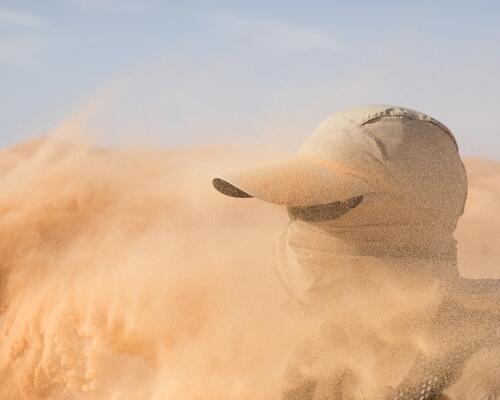Dress for a day in the desert
Our advice: choose clothing that is loose, ventilated, covers well, anti-UV and doesn't let in the sand.
☐ A safari type cap that protects the nape of the neck from the sun OR a Tagelmust head scarf, which has the added benefit of protecting your face from the sand when there's a storm.
☐ A pair of sunglasses with a 3 or 4 index or even ski goggles if there is the risk of a sandstorm.
Be careful as the sand tends to scratch the lenses! Go for glasses that you don't care too much about or ones with anti-scratch lenses.
☐ An anti-UV and ventilated long-sleeved shirt to protect you from the sun's rays and protect you from the heat.
☐ A breathable t-shirt made from cotton or Merino wool to wear with anti-UV sleeves to cover your forearms.
In general, it’s best to avoid synthetic materials in the desert as although they are fast drying, they tend to smell quickly.
☐ Long, loose-fitting trousers made from anti-UV fabric if possible, with anti-sand gaiters.
It's best to avoid skirts and shorts as they don't protect you well from the sun, as well as jeans and leggings which are too hot.
☐ A windproof jacket
☐ Breathable underwear, preferably seamless to avoid rubbing.
☐ Breathable, cotton socks.
☐ A pair of lightweight, anti-UV gloves to prevent sunspots appearing on the hands and avoid painful sunburn.
☐ A pair of lightweight, high-top hiking boots to stop sand getting inside OR a pair of low trainers with anti-sand gaiters to put on them.
Before any trek, we recommend you test your footwear to make sure it’s comfortable. During the day, avoid sandals (without socks) as they expose your feet to sunburn and insect bites.







